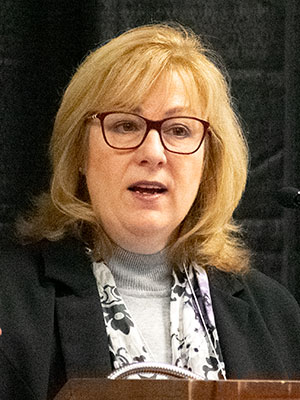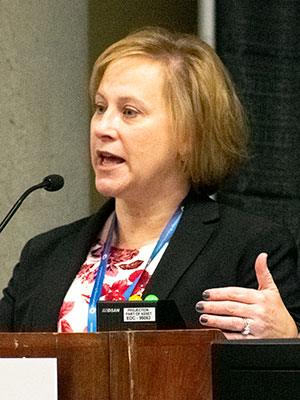
Susan K. Chrostowski, DNP, APRN, ANP-C, had a female patient visit with a list of 30 prescription drugs she was taking. After analyzing the list, Dr. Chrostowski suggested deprescribing one of the medications taken before bedtime, but the patient was hesitant for fear of not being able to sleep again, despite the many other drugs in her regimen that also aid sleep.
Polypharmacy scenarios like this are common, especially in elderly patients, said Dr. Chrostowski, Assistant Clinical Professor, Graduate Faculty, Texas Woman’s University, The Houston J. and Florence A. Doswell College of Nursing, Dallas, TX. She emphasized that it’s critical to assess patients’ comprehensive list of drugs so they understand each one specifically.
Dr. Chrostowski and Kamala D. Nola, PharmD, MS, Professor and Vice Chair, Department of Pharmacy Practice, Lipscomb University College of Pharmacy & Health Sciences, Nashville, TN, reviewed the state of polypharmacy in the U.S., the concerns with it, and ways to deprescribe during the ACR/ARP session One Patient, Many Drugs: Polypharmacy in Rheumatology on Wednesday, Nov. 13, at the Annual Meeting.

Don’t be afraid to deprescribe, Dr. Chrostowski said, reviewing the steps to do so: determining all current medications, considering the overall risk of potential harm, evaluating the risk vs. the benefit, prioritizing drugs for discontinuation, and implementing the deprescribing plan.
“The key to this is monitoring the plan afterwards,” she emphasized.
Dr. Chrostowski also reviewed the Beers Criteria — a list of potentially inappropriate medication use in older adults that is updated yearly — published by the American Geriatrics Society that can help with looking at medications to deprescribe, in addition to other tools such as the STOPP/START criteria (Screening Tool of Older People’s potentially inappropriate Prescriptions)/(Screening Tool to Alert providers to the Right Treatment).
Barriers to desprescribing come from patients, because of concern with side effects, prescriptions initiated by another provider, and lack of time, but also from the provider and the healthcare system. Those barriers include non-interoperative electronic health records, inconsistent primary medication management, and single-disease clinical practice guidelines.
“We want to try to make sure we’re prescribing appropriately, whether we’re adding, reducing or removing medications,” Dr. Chrostowski said. “It’s essential for having optimal patient outcomes. Clinicians need to be familiar with the barriers that may inhibit medication changes, and there are tools available to do so.”
Polypharmacy — and not being prescribed the appropriate medications and doses — can not only be a financial burden to patients and the system, but it can result in adverse events for rheumatology patients. Drug-to-drug interactions can occur, along with drug-to-disease interactions, dosing errors, problems with adherence, and therapeutic omissions. Other concerns are comorbidities, especially in patients with rheumatoid arthritis that have a high prevalence of cardiovascular diseases, infections, malignancies, depression, and osteoporotic fractures.
Dr. Nola said that the annual average of retail prescriptions per capita is 11.6 medications. An area across the southern United States has the highest average, an ode to the fact that geography plays a role in polypharmacy. She also noted that hydrocodone was the U.S. number one drug of choice for years, but it has since become levothyroxine.
“Medication reconciliation is not just about a list of meds,” Dr. Nola said, noting that although polypharmacy has a negative connotation, it is sometimes necessary. “It’s really about three things: what it’s for, how they’re using it, and what should they expect from those medications.”
